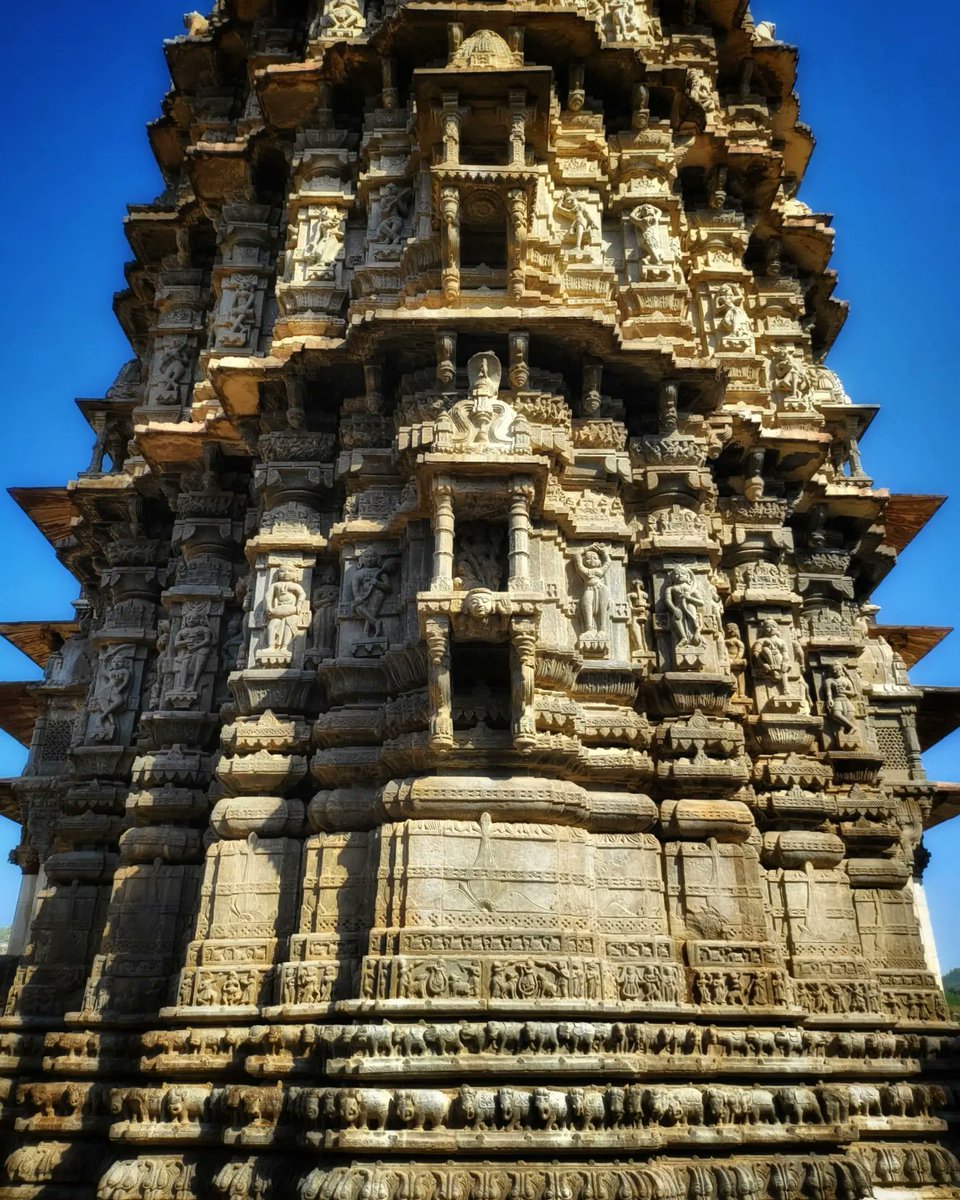
Last week, guided by Sam Dalrymple , we visited two fabulous buildings built by Raja Man Singh of Amber (1540-1614). 

Both show in different ways he managed to bridge the contradictions of being both a Hindu Rajput raja and also, at the same time, the leading general of Akbar's Mughal army who led expeditions against Mewar and Kabul, and was senior mansabdar governor of both Bihar & Bengal. 

The Jagat Shiromani temple at Amber was built by Man Singh and his wife in memory of the death of his son & heir, Prince Jagat. It mixes the traditional Kachchwaha temple style with the new domestic palace architectural style of Fatehpur Sikri. 

The sikara may be in full Rajput style, with the addition only of prominent Mughal-style chajjas. But the exterior of the mandapa looks just like one of Akbar's palaces. 

A short distance down the Jaipur Highway, at Bairat/ Virat Nagar, lies a water garden, also built by Man Singh, based on a similar complex at Narnaul. 

This building is purely Mughal in style, but is decorated with lovely folk-inspired murals showing images of Hindu yogis, Gods and legends. 







Here can be found a cycle of Krishna images, including one showing him charming the wives of Kaliya with his flute... 

... immediately adjacent to a lovely scene from the Persianate tradition: of Layla and Majnun.to a lovely scene from the Persianate tradition: of Layla and Majnun. 

but also evidence of a world where two very different conceptions of life, religion and sovereignty were capable of coming together in a remarkable resolution. 





• • •
Missing some Tweet in this thread? You can try to
force a refresh




























